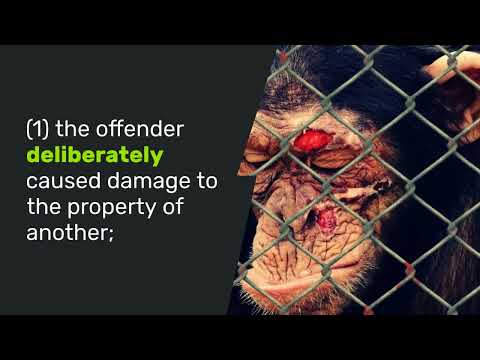
Understanding the Legal Implications of Malicious Mischief in the Philippines
Welcome to this informative article where we will delve into the legal implications surrounding the intriguing concept of malicious mischief in the Philippines. It is important to note that while this article aims to provide a detailed understanding of the topic, it is always advisable to cross-reference with other sources or consult legal advisors for accurate and up-to-date information.
Now, let us embark on this journey to grasp the intricacies of malicious mischief in the Philippine legal system. Malicious mischief refers to the intentional destruction, damage, or defacement of property without the consent of its owner. It encompasses a wide range of acts, from vandalism and graffiti to more serious offenses like arson and sabotage.
📋 Content in this article
In the Philippines, malicious mischief is punishable under Article 327 of the Revised Penal Code. This law defines and outlines the various forms and degrees of malicious mischief, providing a framework for evaluating and punishing offenders accordingly. The severity of the offense is determined by factors such as the value of the damaged property and the intent of the perpetrator.
To gain a comprehensive understanding, let us explore some key points related to malicious mischief in the Philippines:
Understanding the Law of Malicious Mischief in the Philippines
Understanding the Legal Implications of Malicious Mischief in the Philippines
Malicious mischief is a term used in the Philippine legal system to describe the intentional destruction or damage to property. It is important to understand the legal implications of this offense, as it carries serious consequences under Philippine law. In this article, we will explore the essential aspects of malicious mischief and how it is defined and punished in the Philippines.
Definition of Malicious Mischief
Malicious mischief is defined under Article 327 of the Revised Penal Code of the Philippines. According to this provision, malicious mischief is committed when a person deliberately causes damage to the property of another without the owner’s consent. The damage caused may be through acts of destruction, defacement, alteration, or any other means that result in the impairment or destruction of the property.
Elements of Malicious Mischief
To establish a case of malicious mischief, certain elements must be proven:
1. Willful intent: The accused must have acted intentionally or with malice in damaging the property. This means that they had a deliberate purpose to cause harm or damage to another person’s property.
2. Damage to property: There must be actual physical damage to the property. Mere inconvenience or annoyance does not qualify as malicious mischief.
3. Absence of consent: The accused must have acted without the owner’s consent or authorization. If the owner gave permission for the act, it may not be considered malicious mischief.
Penalties for Malicious Mischief
The penalties for malicious mischief depend on the value of the damage caused to the property. The Revised Penal Code classifies malicious mischief into three categories:
1. Simple malicious mischief: If the damage caused is valued at less than PHP 1,000, the offense is considered simple malicious mischief.
Understanding the Concept of Malicious Filing of a Case in the Philippines
Understanding the Legal Implications of Malicious Mischief in the Philippines
When it comes to criminal offenses in the Philippines, one offense that individuals should be aware of is malicious mischief. Malicious mischief refers to the intentional damaging, destroying, or defacing of someone’s property without their consent. This offense is taken seriously under Philippine law and can result in both civil and criminal consequences. To better understand the legal implications of malicious mischief, it is important to consider the following key points:
- Willful intent to cause damage or destruction to someone else’s property;
- Actual damage or destruction to the property; and
- Lack of consent from the owner.
Title: Understanding the Legal Implications of Malicious Mischief in the Philippines
Introduction:
Malicious mischief is a term used to describe willful damage or destruction of another person’s property. It is imperative for individuals to have a clear understanding of the legal implications surrounding this offense, particularly in the Philippines. This article aims to provide a comprehensive overview of the topic and emphasize the importance of staying up-to-date with the evolving legal landscape. Readers are encouraged to verify and cross-reference the information provided herein as laws may change over time.
1. Definition and Elements of Malicious Mischief:
Malicious mischief refers to the intentional damaging or destroying of property that belongs to someone else without any lawful justification. The act must be committed with malice, meaning there is an intent to cause harm or injury. To establish a case of malicious mischief in the Philippines, the following elements must be present:
– The existence of property belonging to another person.
– The intentional damaging or destroying of such property.
– The absence of any lawful reason or justification for the act.
– The act is done with malice.
2. Classifications and Penalties:
In the Philippines, malicious mischief is classified into two categories based on the value of the damage caused: less serious (Art. 327, Revised Penal Code) and serious (Art. 329, Revised Penal Code).
a) Less Serious Malicious Mischief:
If the damage caused is valued at less than 1,000 Philippine Pesos (PHP), the offense is considered less serious. The penalties for less serious malicious mischief may include imprisonment for a minimum period, a fine, or both.
b) Serious Malicious Mischief:
If the value of the damage caused exceeds 1,000 PHP, the offense is considered serious. Penalties for serious malicious mischief may involve higher fines and longer periods of imprisonment compared to less serious cases.
3.
